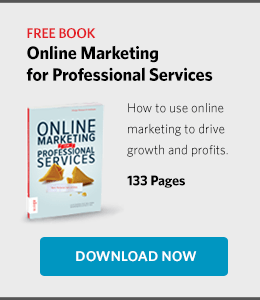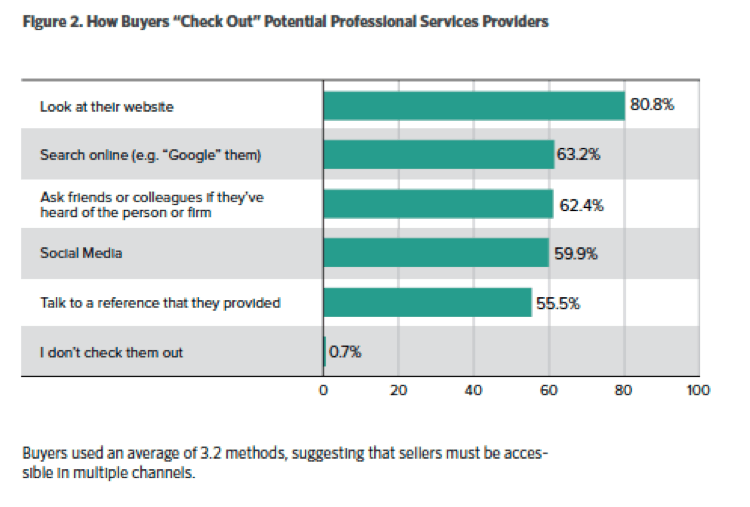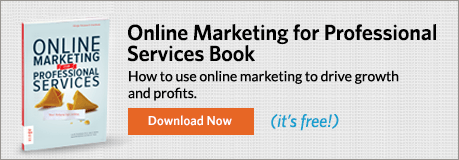Working in the AEC (Architecture/Engineering/Construction) industry for over ten years as a marketing consultant, I have seen many companies thrive, and I have sadly seen many businesses close their doors. A great number of firms closed in the recent recession, including large, ENR ranked companies, because they fought hard for commoditized, low bid contracts.
Many AEC firms are still struggling with commoditization; yet other firms are flourishing and growing significantly by more than 20% year over year. The AEC industry has a distinct “Digital Divide” where some firms are declining in revenue with decreasing profits, and other companies are commanding top dollar on projects and hiring the best people from their sinking competitors.
Although the technical skills, certifications, and equipment of companies on either side of the divide are equal, what is different is the company’s use of digital marketing and philosophies of business development. Every company has a website today and prospective clients have equal access to each of them, yet some companies are getting business from their website while their competitors are not. Why?

I realize a construction company doesn’t sell a new building online like Amazon sells Legos, and please do not tell me that for the past 50+ years, you’ve always sold it a certain way. We no longer live in a business environment where doing good work means you will be successful in the future. You have too much competition, and until a prospect client hires you, most prospects probably can’t tell you apart from your competition.
Your competitors have the same experience, same tools, and the same opportunities as you. What it really comes down to is positioning yourself in the marketplace and taking a stand on your firm’s personality, service offerings, and who you're attracting to find both the right clients and employees. The best place to showcase your positioning and expertise is online, and the AEC firms that have embraced the web are the ones increasing their revenue and profitability.
The reason the web is so vital is two-fold:
1) Potential buyers look to the web to find firms like yours. If they look at a dozen AEC firms that do what you offer, will you even make their short-list of the 5-8 companies they are going to call to bid on their project? You see, clients don’t want to review 50 proposals to get to a short-list of 3-5 companies to interview. They prefer to do their research themselves ahead of time and select 5-8 companies to ask to bid. From there, they will interview the top 2-3 firms. If you’re firm is not getting business online, then you’re missing out on dozens of opportunities every year. In AEC, that means millions of dollars in revenue that goes to your competitors.
2) Referrals look for you online. Even when referred by a current client, vendor, or friend, prospects will go to your website to check you out. In a recent study, we found buyers use an average of 3.2 channels to “check you out” and three of the top 4 ways they do that are online.
We also found that 51.8% of referrals do not make contact with the companies that have been suggested they work with; meaning half the prospects referred to you never give you a chance to earn their business.

Now I’m not saying get rid of your business developers and go strictly online, however, you need to find the right balance for your firm because the AEC firms growing by 20% annually have a healthy mix of online marketing and traditional sales efforts.
SEE ALSO: 7 Top Trends to Impact AEC Marketing in 2016
Your website is at the top of your lead generation strategy’s funnel. Whether your excellent reputation got you a referral or Google ranked you well for a keyword; prospects are searching for you online and starting their buying journey there.
Most AEC firms only utilize the bottom of the funnel to develop new clients, so they are fishing with the smallest net. Having a well-positioned brand reflected on your website and sharing your expertise with your blog will attract prospects using search engines and confirm your expertise to them and those referred to you. This basic sharing of knowledge is the foundation of your lead generation strategy.
As prospects become more committed and move further down their buying path, they look for resources from experts such as guides and webinars. They willingly give their name and email address to you as currency for your insight and expertise.
As they near the tipping point in short-listing firms and ultimately choosing a firm, they need proof that your expertise works when applied in the real world. This period is when you utilize case studies, research reports, and white papers. Too many AEC firms lead in with these closing materials, and buyers are not ready to receive them at the beginning of the relationship.
This online lead generation strategy of using a blog, guides, webinars, case studies, and whitepapers to share your expertise can be easily set up using most website platforms such as WordPress. At this point, your buyer is engaged and determining if you make the short-list without involving your business development team. By the time your business developers get involved, potential clients are nearly ready to buy. This process saves your team time and gives them the time to work on more prospects and stay engaged with current clients better. Your cost per acquisition significantly drops by utilizing a robust online lead generation system. Yes, you can achieve 20% revenue growth while lowering your acquisition costs. (CFOs love that!)
Another great aspect of active online lead generation strategies is that it also recruits the best talent to your firm, especially Millennials. When potential employees are looking to leave their company, they go online and look for a firm that fits their personality and career path. Showing your expertise attracts employees that want to become experts themselves. We call this the Halo Effect to having Visible Experts.
You can further personalize your potential buyers (and potential employees) buying path when incorporating marketing automation with your lead generation strategy, which will send them more relevant content based on their behaviors. For example, if a prospect downloads a guide regarding healthcare, you can suggest they attend a webinar on Future Trends in Healthcare, send them primary research about healthcare facilities, and share case studies about successful healthcare projects. Giving them relevant content further illustrates your firm’s expertise and that you know their industry and gives them exactly what they want to make their decision; they do not have to dig through all the generic materials to find what they need.
After all, prospective clients are looking for reassurance they are hiring the best AEC firm, one that makes their lives easier and the project less risky; they are not looking for someone that can get the job done cheaper than anyone else. Clients choose the lowest bid when they see no difference in the options; therefore, the lowest risk is the cheapest.
Additional Resources
- Learn about the most effective online marketing strategies to generate leads in our Online Marketing for Professional Services book.
- Download a free copy of our SEO Guide for Professional Services to create an SEO plan to make your firm easily found online.
- Our Lead Generating Website Guide details how your firm can generate qualified leads with its website.
How Hinge Can Help
Hinge has developed a comprehensive plan, The Visible Firm℠ to address these issues and more. It is the leading marketing program for delivering greater visibility, growth, and profits. This customized program will identify the most practical offline and online marketing tools your firm will need to gain new clients and reach new heights.

